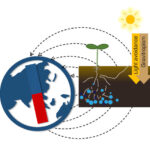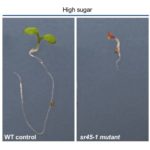Tag Archives:arabidopsis
The root is an ideal system to study magnetobiology in plants
Analysis of the arabidopsis Major Facilitator Superfamily reveals a larger and more diverse group of transporters
The herbicide glyphosate activates oxidative metabolism in the weed model plant Arabidopsis thaliana
mRNA Interactome Capture: a frontier method to discover mRNA-bound proteomes in plants
Live-cell imaging revealed the dynamics and the roles of cytoskeleton in polarizing plant zygote
Switching colors – feedback control of carotenoid biosynthesis in Arabidopsis
Early plant development under stress relies on RNA splicing
Control of plant architecture by gravity
Acyl-CoA-binding proteins help plants “degrease” adversities
Serving as the building blocks for triacylglycerides and membrane phospholipids, fatty acids are essential in all forms of life. Given their chemical inertness, fatty acids need activation into a more water-soluble form (as acyl-CoA esters), prior to















